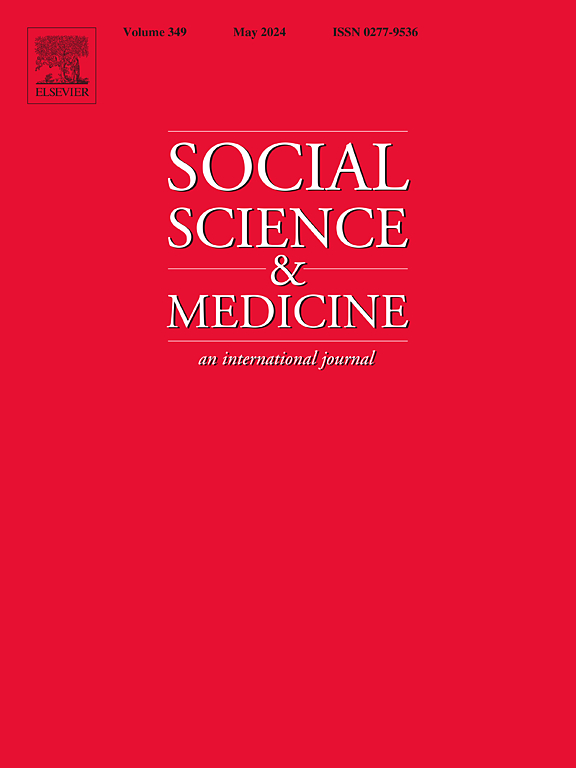Self-rated health predicts mortality -- but it depends on your age
IF 4.9
2区 医学
Q1 PUBLIC, ENVIRONMENTAL & OCCUPATIONAL HEALTH
引用次数: 0
Abstract
While self-rated health (SRH) has long been known to predict mortality in adult populations, the age of respondents plays an interesting and complex role in both explaining and modifying the association. The objective of this study is to test for differences by age in the association of SRH with all-cause mortality. Because much of the research has been conducted with older samples, a wider age range of adults may show that some age groups have more predictive SRH than others. We estimated Cox proportional hazards models to determine if SRH in 1999 predicted survival to 2021 differently based on age, using data from the Panel Study of Income Dynamics. The sample consisted of 5843 respondents aged 25 to 97 who were interviewed in 1999 and followed for survival until 2021. We included demographic and socioeconomic factors, physical health and mental health indicators, and health risk behaviors as covariates to assess their potential mediating role in the predictive ability of SRH. The results showed a significant interaction between SRH and age, with larger and more significant hazards for those aged 40–54 and 55–74. There were no significant effects at all for the youngest group and virtually none for the oldest group. For example, for individuals aged 40–54, there were significant HRs for poor health (2.49, 95% CI 1.05, 5.89) and fair health (1.95, 95% CI 1.11, 3.42) compared to excellent health in the fully adjusted models. Our findings suggest that age group differences in the predictiveness of SRH may reflect an absence of health knowledge and experience for younger respondents, and a survivor bias for the oldest age group due to the lifetime elimination of those with poor health.
自评健康状况可预测死亡率--但这取决于您的年龄。
众所周知,自评健康状况(SRH)可以预测成年人的死亡率,而受访者的年龄在解释和改变这种关联方面起着有趣而复杂的作用。本研究的目的是检验自评定健康状况与全因死亡率之间的关系在年龄上是否存在差异。由于大部分研究都是针对年龄较大的样本进行的,因此更广泛的成人年龄范围可能会显示出某些年龄组的 SRH 比其他年龄组更具预测性。我们利用 "收入动态面板研究"(Panel Study of Income Dynamics)的数据估算了 Cox 比例危险模型,以确定 1999 年的 SRH 预测 2021 年的存活率是否因年龄而异。样本包括 5843 名年龄在 25 岁至 97 岁之间的受访者,他们在 1999 年接受了访谈,并在 2021 年之前对其生存情况进行了跟踪。我们将人口和社会经济因素、身体健康和心理健康指标以及健康风险行为作为协变量,以评估它们在性健康和生殖健康预测能力中的潜在中介作用。结果显示,性健康和生殖健康与年龄之间存在明显的交互作用,40-54 岁和 55-74 岁人群的危害更大、更明显。最年轻的群体没有明显的影响,最年长的群体几乎没有影响。例如,对于 40-54 岁的人,在完全调整模型中,健康状况差(2.49,95% CI 1.05,5.89)和健康状况一般(1.95,95% CI 1.11,3.42)与健康状况优相比有显著的危险性。我们的研究结果表明,性健康和生殖健康预测性方面的年龄组差异可能反映了年轻受访者缺乏健康知识和经验,以及由于健康状况差的受访者终生被淘汰而导致的最年长年龄组的幸存者偏差。
本文章由计算机程序翻译,如有差异,请以英文原文为准。
求助全文
约1分钟内获得全文
求助全文
来源期刊

Social Science & Medicine
PUBLIC, ENVIRONMENTAL & OCCUPATIONAL HEALTH-
CiteScore
9.10
自引率
5.60%
发文量
762
审稿时长
38 days
期刊介绍:
Social Science & Medicine provides an international and interdisciplinary forum for the dissemination of social science research on health. We publish original research articles (both empirical and theoretical), reviews, position papers and commentaries on health issues, to inform current research, policy and practice in all areas of common interest to social scientists, health practitioners, and policy makers. The journal publishes material relevant to any aspect of health from a wide range of social science disciplines (anthropology, economics, epidemiology, geography, policy, psychology, and sociology), and material relevant to the social sciences from any of the professions concerned with physical and mental health, health care, clinical practice, and health policy and organization. We encourage material which is of general interest to an international readership.
 求助内容:
求助内容: 应助结果提醒方式:
应助结果提醒方式:


